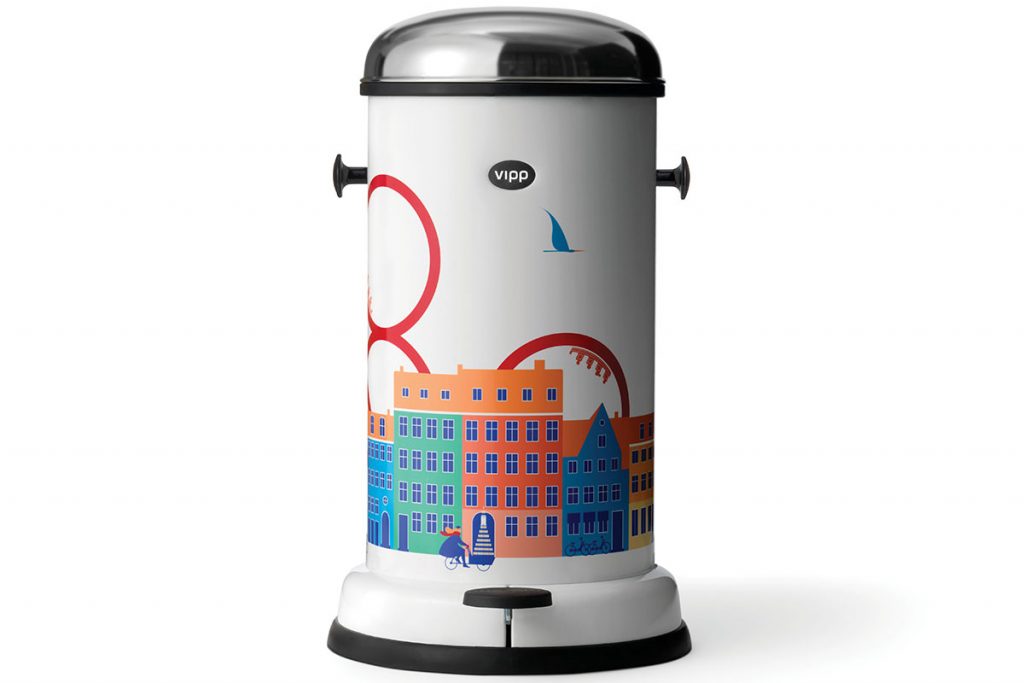The enduring popularity of the original design is testament to its appeal, with the current version featuring the same recognisable minimal style

They say it takes a little luck to get a business off the ground. Sometimes it all comes down to being in the right place at the right time with the right product to get any kind of traction. For Holger Nielsen, lightning struck twice. First, his fortunes changed quite literally in 1932 when he won the lottery. His prize, a car, was a rather wonderful reward for any 17-year-old, but for Nielsen it was the beginning of a much greater journey.
Despite his deep love of cars, the teenager didn’t have a driving licence, so he decided to sell the vehicle and use the proceeds to fund his other great passion: working with steel. Within seven years he had built up his own business and got married – and it was his wife’s request for a pedal bin for her hairdressing salon that inspired a design that really would make his fortune.

Nielsen focused solely on function: the large pedal foot provided stability, the rubber ring at the base protected the floor, the domed steel lid could be easily cleaned, and the ‘ears’ on the side of the body allowed the bin to be moved easily and quickly.
Nielsen hadn’t intended to make the bin for anyone else, but the doctors’ and dentists’ wives who frequented the salon saw its practical advantages and soon began requesting it for their husbands’ clinics. By the 1950s, the Vipp, as it was now known, was the dominant brand in the professional market. Around the same time, new steel production techniques meant the original wavy lid design was replaced with the now-familiar rounded top.

“Good design never goes out of fashion,” claimed Holger Nielsen, and, 80 years on, there’s no disputing the truth of his words. The Vipp bin’s popularity has only intensified, thanks in part to his youngest daughter, Jette, who brought her father’s design into the commercial world. The company has grown and diversified since then, of course, producing various homeware accessories as well as a range of ultra-cool modular kitchens, but it’s the classic bin that remains its biggest seller. That appeal was recognised by MoMA in 2009 when the bin was introduced to the New York museum’s permanent design collection.
It’s no surprise that a special edition was commissioned to celebrate Vipp’s anniversary. Vahram Muratyan’s carousel of ordinary life in Copenhagen is a fitting tribute to the company’s Danish roots, with the artist’s signature colourful illustrations providing a playful twist to the bin’s minimalist aesthetic. If you want one, be quick – it’s a limited series that’s already proving as popular as the original.
BEHIND THE NAME The Danish verb vippe, which means ‘to tilt’, was a natural inspiration for the name of Holger Nielsen’s first bin design, describing the smooth rise and close of the lid.
THE MAKER Over the last 80 years, Vipp has gone from a staple of Danish medical and dental surgeries to being a global brand selling modular kitchens and bathroom and kitchen accessories.
THE VERDICT The enduring popularity of Nielsen’s original design is testament to its appeal, with the current version featuring the same instantly recognisable minimal style paired with its signature domed lid.




